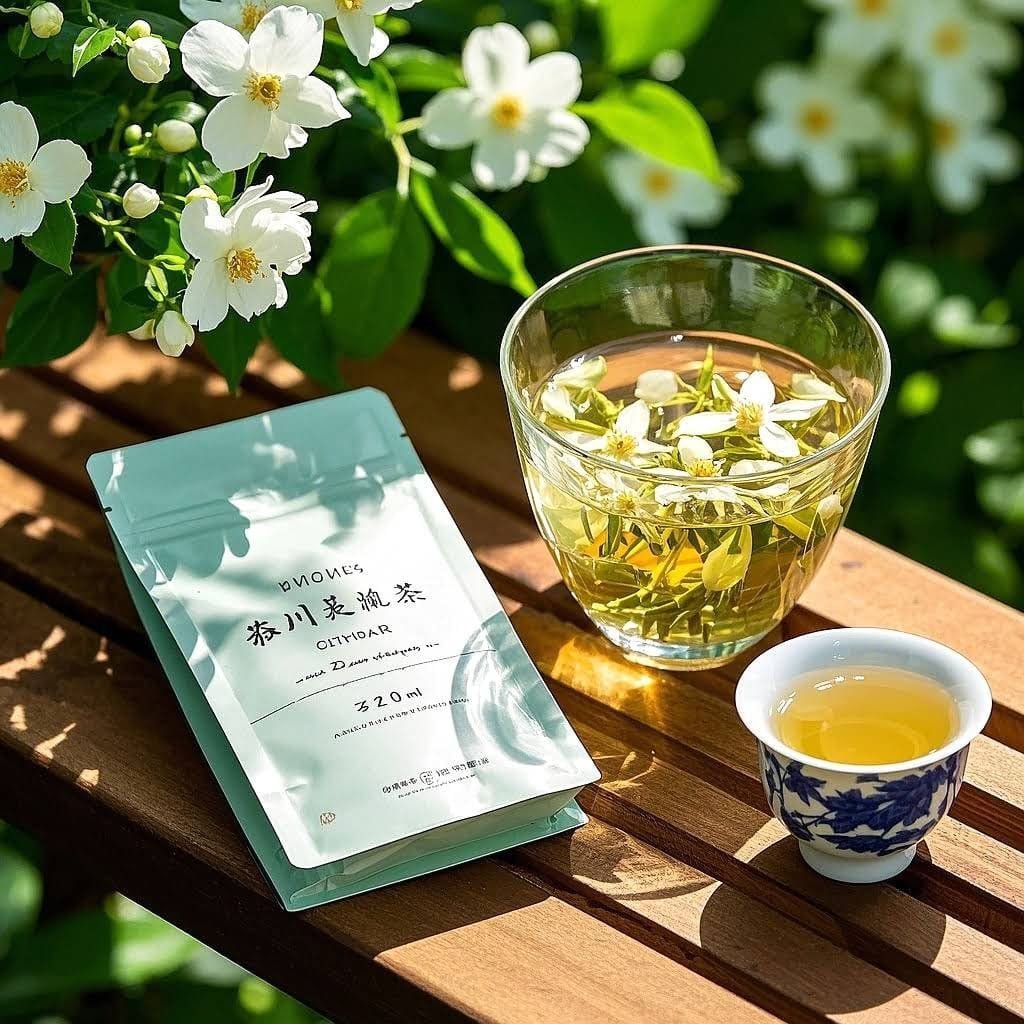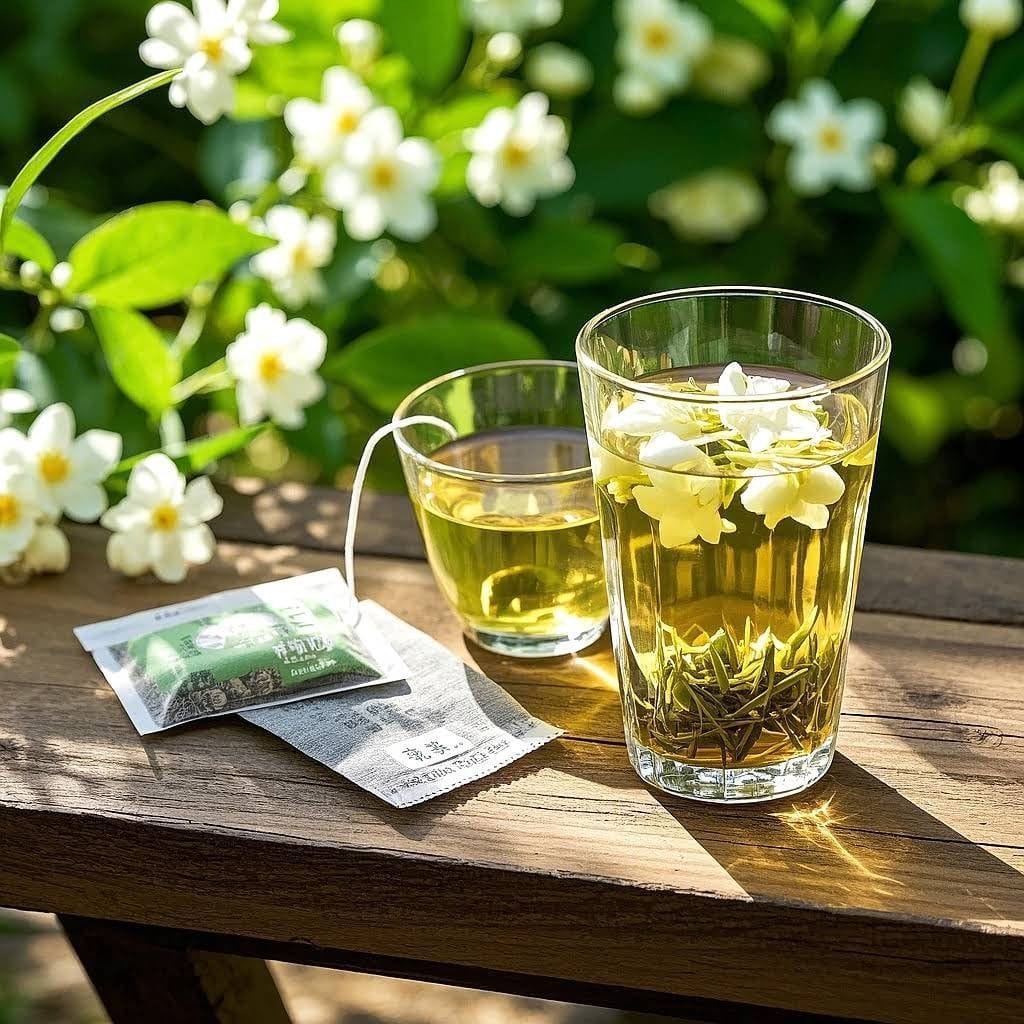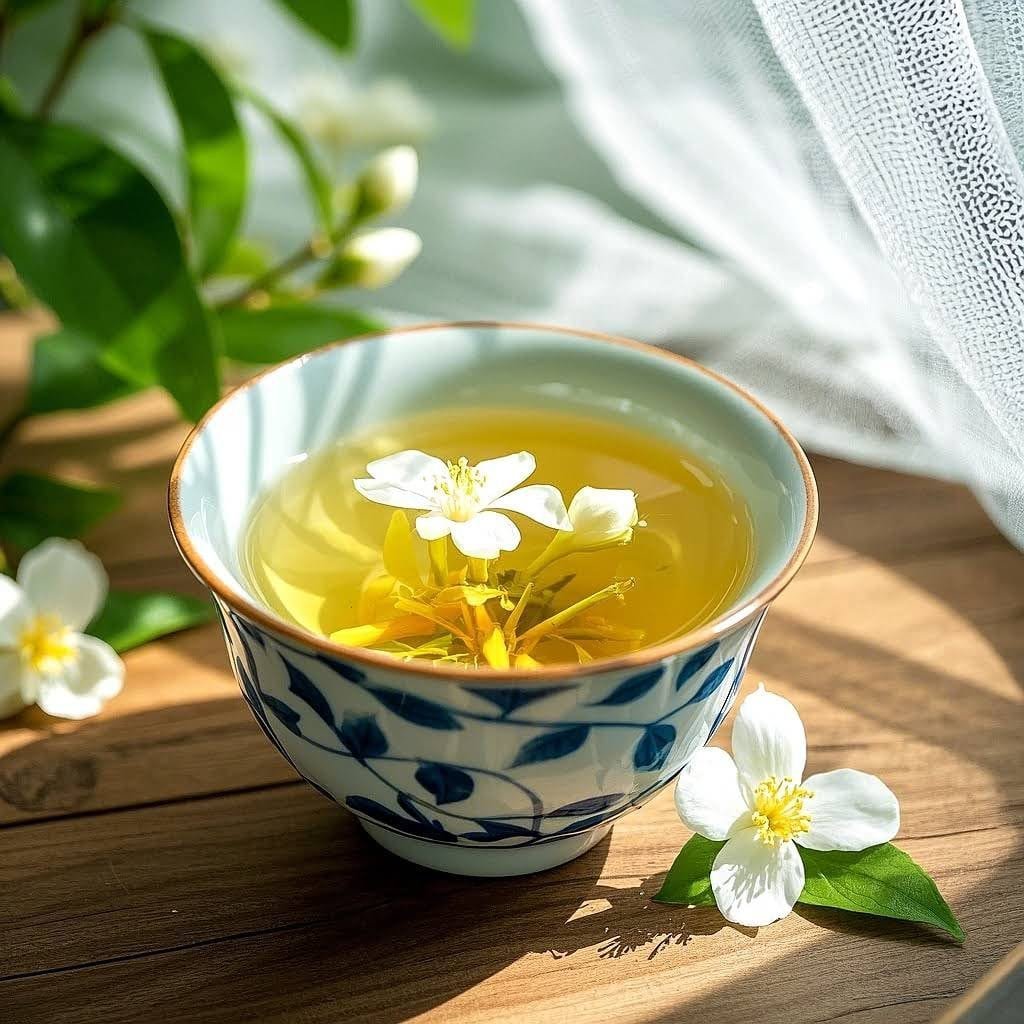If you’ve ever sipped a cup of jasmine tea and wondered, “Where is jasmine tea from?”—the answer lies in the misty mountains and sun-drenched valleys of China. While jasmine tea has become a global sensation, its roots are deeply intertwined with Chinese culture, particularly in the province of Sichuan. In this guide, we’ll trace the origins of jasmine tea, explore why Sichuan is its spiritual home, and introduce you to Xishubuluo.com’s premium Sichuan jasmine green teas.

The Ancient Origins of jasmine flower tea
Jasmine tea’s story begins over a millennium ago in China, where tea masters first experimented with scenting tea leaves. The practice gained popularity during the Tang Dynasty (618–907 AD), when jasmine flowers were used to enhance the aroma of green tea. However, it wasn’t until the Song Dynasty (960–1279 AD) that the technique of “flowering” tea—layering tea leaves with jasmine blossoms—was perfected.
Today, jasmine tea remains a symbol of Chinese refinement, and its production is a meticulous art form. While regions like Fujian and Zhejiang also produce jasmine tea, Sichuan stands out as a cradle of innovation and quality.
Where is Jasmine Tea From? Sichuan’s Unique Terroir
When asking, “Where is jasmine tea from?”—Sichuan Province in southwestern China is the heart of the answer. Known for its subtropical climate, fertile soil, and misty hills, Sichuan provides the ideal environment for both tea and jasmine flowers to thrive. Key regions include:
- Mount Emei, Leshan:
A UNESCO World Heritage site, Mount Emei’s high altitude (1,000–1,500 meters) and cool temperatures create the perfect microclimate for tender tea leaves. The area is also famous for its jasmine farms, where flowers bloom from May to October. - Jianwei County:
Nicknamed the “Jasmine Capital of Sichuan,” Jianwei produces some of the province’s most fragrant jasmine blossoms. The combination of the Min River’s moisture and fertile alluvial soil results in large, aromatic flowers. - Mengding Mountain:
Revered as the birthplace of tea cultivation, Mengding’s misty slopes are home to ancient tea gardens. Here, jasmine tea is crafted using traditional methods, ensuring a balance of floral and earthy notes.

Why Sichuan Jasmine Tea Stands Out
Sichuan’s jasmine tea is celebrated for its bold, complex flavor and unique brewing characteristics. Here’s what sets it apart:
- Double Scenting Process:
Unlike teas from other regions, Sichuan jasmine tea undergoes a double scenting technique. Tea leaves are layered with fresh jasmine flowers twice—once before drying and once after—to maximize fragrance. - High-Quality Tea Leaves:
Sichuan uses premium green tea varietals like Fuding 大白茶 (Fuding White Tea) or Longjing (Dragon Well), known for their tender buds and rich antioxidants. - Cultural Significance:
In Sichuan, jasmine tea is more than a beverage—it’s a symbol of hospitality. Locals often serve it during festivals and ceremonies, pairing it with dim sum or traditional snacks.

How to Brew Sichuan Jasmine Tea Like a Pro
To unlock the full flavor of Sichuan jasmine tea:
- Use 2 teaspoons of loose-leaf tea per 8 ounces of water.
- Heat water to 75–80°C (167–176°F)—avoid boiling water, as it can scorch the leaves.
- Steep for 3–4 minutes.
- Enjoy plain or pair with honey, lemon, or a slice of orange.
jasmijnthee
Zorgvuldig geselecteerde theebladeren van hoge kwaliteit en verse jasmijnbloemen, herhaaldelijk gerijpt. De theesoep is helder, met geurige bloemen en een verfrissende smaak. Laat je genieten van een moment van vredige theegeur in je drukke leven.
Gewicht: 2 oz



